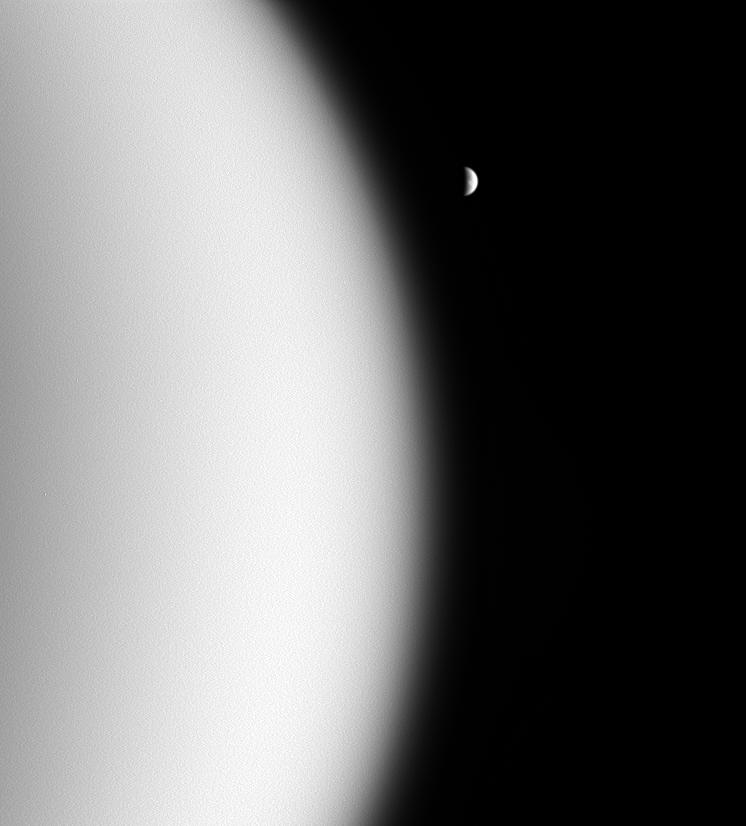From Cloudy to Clear

| PIA Number | PIA08204 |
|---|---|
| Language |
|
During a recent flyby of Titan, the Cassini spacecraft looked beyond the utterly overcast moon and spied clear, distant Rhea in the blackness.
Titan (5,150 kilometers, or 3,200 miles across) is two-and-a-half times smaller than Earth and much less massive. This circumstance causes its atmosphere to extend to much higher altitudes above the surface than does Earth's. The Cassini spacecraft is unable to fly much closer than about 1000 kilometers (600 miles) above Titan's surface -- much closer, and the spacecraft would experience excessive torques from the atmosphere that could interfere with its ability to track the target. By contrast, the International Space Station orbits Earth at an altitude of about 350 kilometers (220 miles).
The bright, fresh crater on Rhea (1,528 kilometers, or 949 miles across) appears near the center of the moon's crescent.
The image was taken in visible-light with the Cassini spacecraft wide-angle camera on May 20, 2006, at a distance of approximately 53,000 kilometers (33,000 miles) from Titan and 873,000 kilometers (543,000 miles) from Rhea. Image scale is 320 meters (1,050 feet) per pixel on Titan and 5 kilometers (3 miles) per pixel on Rhea.
The Cassini-Huygens mission is a cooperative project of NASA, the European Space Agency and the Italian Space Agency. The Jet Propulsion Laboratory, a division of the California Institute of Technology in Pasadena, manages the mission for NASA's Science Mission Directorate, Washington, D.C. The Cassini orbiter and its two onboard cameras were designed, developed and assembled at JPL. The imaging operations center is based at the Space Science Institute in Boulder, Colo.
For more information about the Cassini-Huygens mission visit http://saturn.jpl.nasa.gov . The Cassini imaging team homepage is at http://ciclops.org .
Credit: NASA/JPL/Space Science Institute
